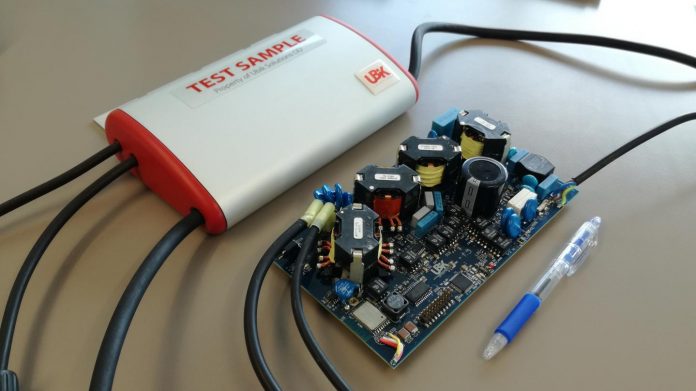Power electronics researchers from Estonia’s TalTech Power Electronics Research Group and startup Ubik Solutions have developed a hybrid inverter solution that integrates a microinverter and power optimizer.
The so-called Optiverter device was conceived in 2016 for applications in small- and medium-sized PV installations and was eventually developed as a prototype. However, its creators said they plan to launch commercial production in the near future.

The device is based on a patented multimode control with variable DC link and a shade-tolerant maximum power point tracking (MPPT) algorithm, which is said to offer an input voltage range that can be up to three times wider than commercial microinverters.
“The shade-tolerant MTTP keeps the Optiverter working where others simply can’t, resulting in up to 30% better energy harvest than a traditional microinverter,” the research group said.
The plug-and-play device combines the ultra-wide MPPT voltage window of PV power optimizers with the direct AC connectivity and inherent safety of PV microinverters, the researchers said in Solar Optiverter—A Novel Hybrid Approach to the Photovoltaic Module Level Power Electronics, which was recently published in IEEE Transactions on Industrial Electronics.
According to lead researcher Dmitri Vinnikov, the microinverter/optimizer can be used with all 60- and 72-cell PV panels with power outputs of up to 350 W. He said the main benefits of the Optiverter are the small component count and overall simplicity of realization, which can help to resolve important issues of module-level power electronic (MLPE) PV systems such as costs per watt and reliability. He also claimed that the device can deliver power under severe opaque shading conditions, when microinverters fail to capture power due to their limited input voltage regulation range.
The product is based on a multi-mode, quasi-Z-source series resonant DC-DC converter (qZSSRC), which is responsible for MPPT and voltage-matching between PV modules and high-voltage DC links.
“Depending on the operation conditions of the PV module, the qZSSRC can feature either the boost or the buck mode, thus maintaining a high efficiency within the ultra-wide input voltage range at the different output power levels,” the researchers said.
However, the qZSSRC topology is not the only option, as other DC–DC converter topologies with comparable performance could also be used. In addition, the device features built-in communication gateways and wiring.
The device is available in 350W version for AC grids (S350AC Optiverter) and a new 400W version for DC Microgrids, the S400DC Optiverter, that is currently under test in a pilot in the Netherlands.
“The technology is patented and pilots are running in four countries,” the research team said.






